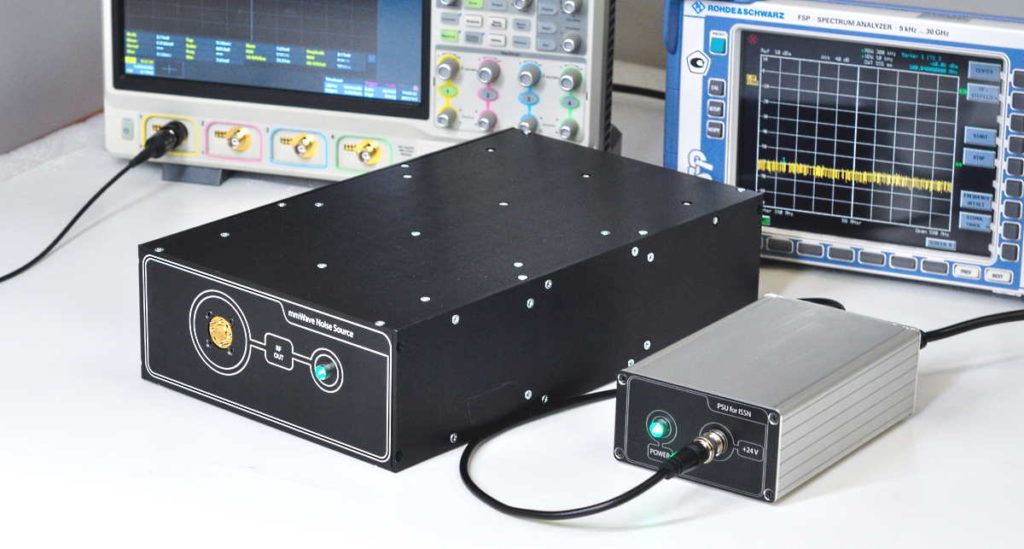
First time in the industry, solid-state noise sources for up to 330 GHz were developed by ELVA-1 and are available for orders.
Applications for sub-mm wave noise sources
- Laboratory and test equipment
- Sub-mm-wave measurements
- Calibration of sub-THz receivers for mobile communications
- Noise figure measurement
Terahertz communication is a prominent future because of its potential for applications in next-generation wireless technologies. It is assumed that the restriction-free frequency spectrum above 275 GHz can be used to achieve 100 Gbps wireless communication. At the current time in the industry, communication in the 70-80 GHz band is implemented at a speed of 10 Gbps, and higher data transfer rates are realized only with channel aggregation, for example, 4x 10 Gbps. Terahertz communication by wireless links can completely replace optical cables when building urban-scale networks.
The expansion of the future communications industry will look to a further 130+ GHz range for additional communication channels. These communication devices operating in such a high spectrum will require noise sources to test the dynamic range and their sensitivity.
Recent developments in the science, telecommunications and electronics industries have encouraged using submillimeter-wave components. Accordingly, submillimeter-wave noise sources are needed to test and calibrate these components.
Such noise sources may be used in various applications, including measurement of noise figure and noise temperature, and calibration of the radiometers and other microwave receivers for different scientific applications including spectroscopy and radio astronomy.
For more info, please download ISSN-03/ISSN-05 datasheet.
